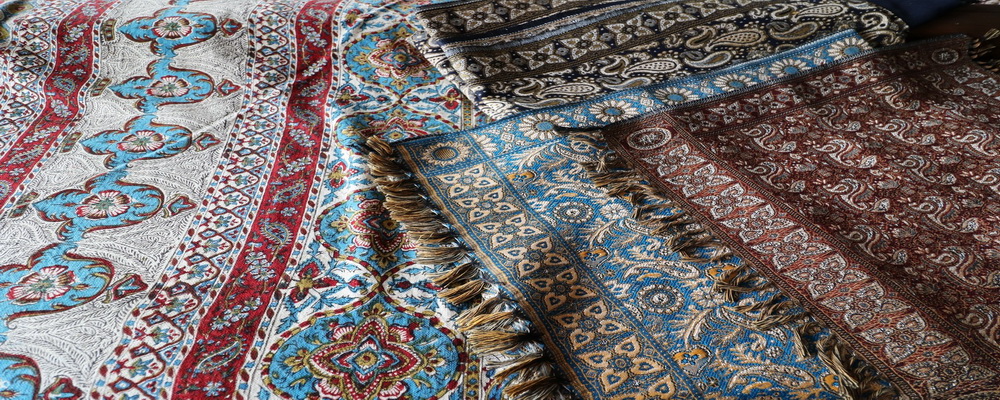Ghalamkar

Minakari
March 21, 2017Ghalamkar
Ghalamkar or Handprinted Persian Textile is a unique type of patterned Iranian Fabric. The fabric is printed using patterned wooden stamps. The stamps are mostly made of pear wood which has better flexibility and density for carving and long-standing utility.

Process of Making
In this workshop, there are hundreds of different patterns consisting of arabesque designs, flora and fauna designs, geometric designs, pre-Islamic designs, hunting scenes, polo games, Persian poems, and Armenian and Hebrew inscriptions. Ghalamkar is also known as Kalamkari in India which basically is a type of hand-painted or block-printed cotton textile. Isfahan is one of the most important producing cities in the world. It is also called; Qalamkar which means rendered with pen and ink that was initially produced in the same method.
A tapestry may be stamped depending on its density and size, between hundreds and tens of thousands of times. For instance, a six-person tablecloth (2 meters by 1.4 meters) should be stamped about 580 times in normal work, while with the same size up to 4000 times in an elegant work.
After finishing printing, they are, in the first stage, steamed for at least an hour to stabilize their designs. Then, taken to the riverbed and kept in some basins to be soaked well, in a great amount of running water. Afterward, the pieces are piled in some large copper vessels containing stabilizers (liquid) and boiled. At the same time, they are turned upside-down by some wooden sticks and washed again in the Zayandeh Rood, then spread on the banks to dry in the final stage.
